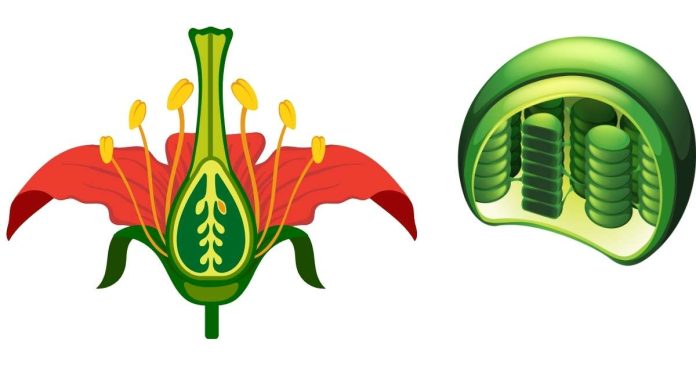1. The Leaf Structure:
Photosynthesis mainly takes place in the mesophyll cells of the leaf, which are located between the upper and lower epidermal layers of the leaf. The mesophyll is further divided into two layers:
- Palisade mesophyll: This layer is found just beneath the upper epidermis. It’s tightly packed with chloroplasts, the organelles responsible for photosynthesis. The palisade cells are long, rectangular, and oriented vertically to maximize light absorption.
- Spongy mesophyll: Located below the palisade layer, this layer has more air spaces between the cells, which facilitates the exchange of gases like carbon dioxide and oxygen. Although the spongy mesophyll has chloroplasts, it plays a less significant role in photosynthesis compared to the palisade layer.
2. Chloroplasts:
The key player in photosynthesis are the chloroplasts, which contain the green pigment chlorophyll. Chlorophyll is crucial because it absorbs light energy from the sun. This light energy is then used to power the process of photosynthesis.
Chloroplasts consist of:
- Thylakoids: Membrane-bound structures within the chloroplasts that contain chlorophyll. These are where the light-dependent reactions of photosynthesis take place.
- Stroma: The fluid-filled space surrounding the thylakoids, where the light-independent reactions (also known as the Calvin Cycle) occur.
3. The Photosynthesis Process:
Photosynthesis can be broken down into two main stages:
- Light-dependent reactions (occur in the thylakoid membranes): The plant absorbs light energy through chlorophyll, which excites electrons. These excited electrons move through an electron transport chain, helping to generate ATP (adenosine triphosphate) and NADPH (nicotinamide adenine dinucleotide phosphate), both of which are energy carriers. In this process, water molecules are split, releasing oxygen as a byproduct.
- Light-independent reactions (occur in the stroma): Also known as the Calvin Cycle, this stage doesn’t require light directly. It uses the ATP and NADPH produced in the light-dependent reactions to convert carbon dioxide from the atmosphere into glucose (C6H12O6). The glucose produced can later be used as energy or stored as starch for the plant.
4. Role of Stomata and Veins:
- Stomata: These are tiny pores on the underside of the leaf that allow for the exchange of gases. Carbon dioxide (CO₂) enters the leaf through the stomata, and oxygen (O₂), a byproduct of photosynthesis, exits through these pores.
- Veins: The vascular tissue in the plant, composed of xylem and phloem, transports water and nutrients to the leaf and carries away the sugars (glucose) produced during photosynthesis. The xylem brings water absorbed by the roots, and the phloem distributes the glucose produced in the leaf to other parts of the plant.
5. Overall Reaction:
The general equation for photosynthesis is:
6CO2+6H2O+lightenergy→C6H12O6+6O2
This shows that carbon dioxide and water, using light energy, are converted into glucose and oxygen.
6. Why the Leaves?
Leaves are the primary site for photosynthesis because:
- Large Surface Area: Leaves have a wide surface area to capture as much sunlight as possible.
- Chloroplast Distribution: The palisade mesophyll cells have a high density of chloroplasts to maximize the plant’s ability to perform photosynthesis.
- Location and Accessibility to Resources: Leaves are positioned to be exposed to light and are connected to vascular tissue that transports water, nutrients, and sugars.
In conclusion, while other parts of the plant may contribute to the overall process by providing water, nutrients, or sugar transport, photosynthesis primarily occurs in the leaves, specifically in the chloroplasts of the mesophyll cells.


